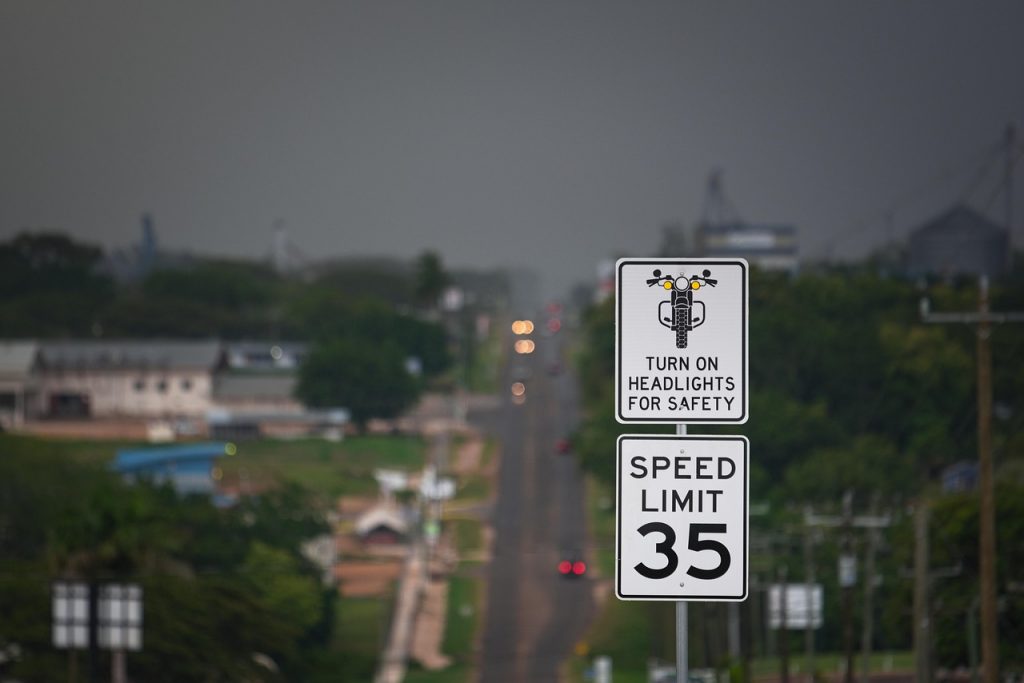Sorting through motorcycle safety myths vs facts is more than just an academic exercise—it can save lives.
It’s important to question what you’ve heard and cross-reference it with reliable information, regardless of how long you’ve been riding.
The most prevalent myths regarding motorcycle safety may seem plausible at first, but they are frequently based on out-of-date ideas, rumours, or insufficient data.
These stories, which range from falsehoods spread by motorcycle safety advocates to the enduring belief that helmets are more harmful than beneficial, put riders at needless risk.
One of the most misunderstood and misrepresented topics in the transportation industry is motorcycle safety. Many riders continue to be misled by antiquated ideas even after decades of awareness campaigns and access to riding statistics.
In this post, we’re debunking motorcycle safety myths that continue to circulate both online and in real-world riding communities. These are not harmless assumptions—they’re motorcycle safety myths that could put you at risk.
If you’re wondering what are the biggest motorcycle safety myths, this guide breaks them down and replaces fiction with facts, helping you become a more informed and responsible rider.
Myth #1: “Helmets Do More Harm Than Good”
This is one of the most harmful motorcycle safety myths that could put you at risk. Some riders claim helmets reduce awareness or cause neck injuries, but there’s zero scientific evidence supporting this.
Fact: According to the CDC, helmets reduce the risk of death by 37% and brain injury by nearly 70%. Wearing a helmet is not only common sense—it’s statistically proven to save lives.
This is a clear case of motorcycle safety myths vs facts, where data speaks louder than folklore.
(Source: CDC Motorcycle Safety Fact Sheet)
Myth #2: “Experienced Riders Don’t Need Training”
It’s easy to think that years of riding equal mastery, but riding skill can plateau or degrade without regular practice and education.
Fact: The Motorcycle Safety Foundation encourages ongoing training for riders at all experience levels. Even veteran riders benefit from refresher courses and advanced riding programs. When it comes to myths about motorcycle safety, overconfidence is a dangerous mindset.
(Source: MSF Advanced RiderCourse)
Myth #3: “Loud Pipes Save Lives”
Among the most common misconceptions about motorcycle safety is the belief that loud pipes increase rider safety by making bikes more noticeable. This idea has stuck around for decades, but it doesn’t stand up to scrutiny.
While loud exhaust systems might draw attention in some scenarios, most drivers don’t hear the motorcycle until it’s already passed—especially when their windows are closed or music is playing. Motorcycle safety myths like this create a false sense of security.
Fact: Visibility is best achieved through rider positioning, proper lane usage, and reflective gear—not noise.
(Source: NHTSA Motorcycle Safety Guidelines)
Myth #4: “Laying the Bike Down Prevents Injury”
“Laying down the bike” refers to a controversial and outdated technique where a motorcyclist intentionally drops the motorcycle onto its side—usually while still moving—in an attempt to avoid a crash.
This misconception stems from an era when older motorcycles lacked proper traction control and advanced braking systems. While it may have seemed like a viable option on bikes with poor emergency handling, modern motorcycles are significantly more capable and are designed to help riders maintain control during sudden stops or evasive maneuvers.
It’s a common mistaken belief that laying down their bikes will help them stay safe in an accident, but doing so actually means giving up all control.
Fact: The chances of preventing or reducing injury are higher when you brake carefully and remain upright. One of the many misconceptions about motorcycle safety that, if believed, might have major consequences is this one.
(Source: Motorcycle Safety Foundation)
Myth #3: “Helmets Do More Harm Than Good”
This is one of the most harmful motorcycle safety myths that could put you at risk. Some riders claim helmets reduce awareness or cause neck injuries, but there’s zero scientific evidence supporting this.
Fact: According to the CDC, helmets reduce the risk of death by 37% and brain injury by nearly 70%. Wearing a helmet is not only common sense—it’s statistically proven to save lives.
This is a clear case of motorcycle safety myths vs facts, where data speaks louder than folklore.
(Source: CDC Motorcycle Safety Fact Sheet)
Myth #4: “Experienced Riders Don’t Need Training”
It’s easy to think that years of riding equal mastery, but riding skill can plateau or degrade without regular practice and education.
Fact: The Motorcycle Safety Foundation encourages ongoing training for riders at all experience levels. Even veteran riders benefit from refresher courses and advanced riding programs. When it comes to myths about motorcycle safety, overconfidence is a dangerous mindset.
(Source: MSF Advanced RiderCourse)
Myth #5: “Motorcyclists Are Usually at Fault in Crashes”
Many people assume that motorcycle crashes are usually the rider’s fault due to speed, lane splitting, or aggressive behavior. This misconception distorts public perception and places unfair blame on motorcyclists.
Fact: Research consistently shows that in roughly two-thirds of collisions between motorcycles and other vehicles, the other driver is at fault—typically for failing to yield or not seeing the motorcycle.
Debunking motorcycle safety myths like this one helps shift attention to driver education and awareness.
(Source: Hurt Report, NHTSA)

Common Causes of Motorcycle Accidents
To better understand how to prevent crashes, it helps to know what causes them. Lack of visibility is a leading factor. Drivers often fail to see motorcycles in blind spots.
Speeding reduces reaction time and increases crash severity. Distracted driving, whether by the rider or another driver, adds even more risk.
Meanwhile, road hazards like potholes or uneven pavement are far more dangerous for bikes than for cars. Impaired riding—due to alcohol or drugs—continues to cause many fatal crashes.
For more insights, check out the Common Causes of Motorcycle Accidents from the Montana Motorcycle Safety Foundation.
Motorcycle Safety Myths vs Facts: What Riders Need to Remember
Sorting through motorcycle safety myths vs facts is more than just an academic exercise—it can save lives.
It’s important to question what you’ve heard and cross-reference it with reliable information, regardless of how long you’ve been riding.
The most prevalent myths regarding motorcycle safety may seem plausible at first, but they are frequently based on out-of-date ideas, rumours, or insufficient data.
These stories, which range from falsehoods spread by motorcycle safety advocates to the enduring belief that helmets are more harmful than beneficial, put riders at needless risk.
What Are the Biggest Motorcycle Safety Myths
By understanding the biggest motorcycle safety myths and taking steps to educate yourself and others, you can help foster a smarter and safer riding culture.
If you hear something that sounds questionable, don’t take it at face value—look into the facts. Debunking motorcycle safety myths isn’t just about winning arguments. It’s about staying alive.
Make Motorcycle Safety a Priority
Motorcycle safety starts with you. Whether you’re a rider or a driver, taking responsibility for road safety helps protect everyone. From wearing the right gear to staying alert and informed, every step matters.
If you’re ready to take action or want to learn more about improving motorcycle safety in your community, contact the Montana Motorcycle Safety Foundation today. Let’s work together to create safer roads—one ride at a time.
